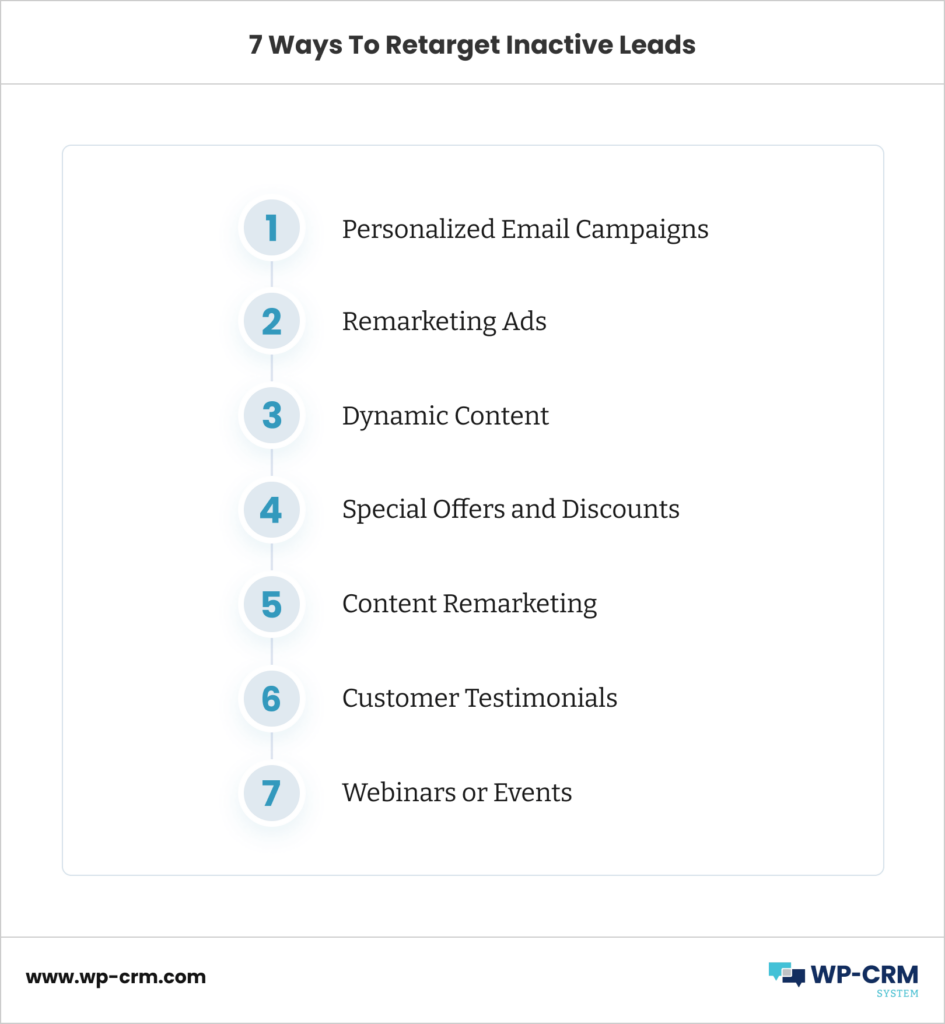How To Retarget Inactive Leads
Once you launch a new product on the market, there is usually a surge of interest and sales, only to see it diminish after a while. The trap many business owners fall into is building strategies on how to acquire new customers. However, they underestimate how important it is to retarget leads that showed some engagement but for some reason failed to stick through.
In fact, 58% of marketers use retargeting for customer retention. What’s more, it is actually 6 to 7 times cheaper than new customer acquisition. Of course, this doesn’t mean you should leave all your efforts on either but rather balance them out.
In this article, we will explain why a lead may become inactive, define retargeting in sales and highlight its benefits. We will also suggest you a few actionable ways to retarget leads that went shy. Without further ado, let’s dive in!
Why Do Leads Get ‘Cold’?
Leads can become “cold” for various reasons, causing a decline in their responsiveness and interest. One common reason is a lack of nurturing or follow-up from the sales team. When leads don’t receive timely and relevant communication, they may lose interest or forget about the product or service. A client relationship management system like WP-CRM can be of great help to track all communication and handle it in a timely manner.

Another factor is changing priorities or circumstances within the lead’s own professional practice. Organizational restructuring, budget constraints, or shifting business needs can divert their attention away from the initial interest.
Additionally, competition plays a role in a lead’s lack of activity. If other industry players offer better solutions or more compelling deals, leads may lose interest in your offering.
Lastly, leads can go cold if they feel unengaged or undervalued. It’s crucial to maintain consistent engagement and demonstrate the value proposition to keep leads warm and interested in your business.
What Is Retargeting?
Retargeting in sales refers to the practice of re-engaging potential customers who have shown interest in your products or services but have not yet made a purchase. It involves targeting these individuals with tailored marketing messages or offers to encourage them to reconsider and complete the desired action, such as buying your product or requesting more information.
By using retargeting techniques, sales teams can effectively reach out to leads and remind them of the value and benefits of the product or service, addressing any objections or concerns they may have had. This approach can help keep your brand at the forefront of their minds and increase the chances of converting them into paying customers.
Acquire vs Retarget
Acquiring new customers and retargeting leads are two distinct approaches in sales and marketing, each with its own benefits and strategies.
Acquiring new customers involves reaching out to individuals or businesses who have not previously interacted with your brand. This often requires identifying and targeting a specific audience, generating awareness about your products or services, and nurturing leads through the sales funnel.
As you can see, acquiring new customers can be time-consuming and resource-intensive, as it involves building brand recognition, establishing trust, and convincing potential customers to make a purchase. However, acquiring new customers is essential for business growth and expanding your customer base.
On the other hand, retargeting leads focuses on reconnecting with individuals who have already shown interest in your brand or products. These leads might have visited your website, interacted with your content, or engaged with your marketing campaigns but have not yet converted into customers.
Retargeting allows you to specifically target these warm leads with personalized messages or offers designed to rekindle their interest and encourage them to take the desired action. Since retargeting focuses on a narrower audience, it can be a more cost-effective and efficient way to drive conversions compared to acquiring new customers.
The key advantage of retargeting is that it allows you to leverage existing engagement and familiarity with your brand, increasing the likelihood of converting leads into customers.
By tailoring your messaging and offers to address their specific needs or concerns, you can re-engage leads who may have been on the verge of making a purchase but were not quite ready to commit. Retargeting can also help improve overall marketing ROI by maximizing the value of your existing leads and reducing the risk of losing them to competitors.
7 Ways To Retarget Inactive Leads

Knowing how to retarget inactive sales leads is the key to reignite their interest and encourage them to re-engage with your brand. By implementing the right tactics, you can increase the chances of converting them into paying customers. Here are 7 ways to retarget leads that slipped through the net:
1. Personalized Email Campaigns
Craft personalized and compelling emails tailored to the specific needs and pain points of your inactive leads. Use their previous interactions with your brand as a basis for segmentation, and deliver targeted content and offers to rekindle their interest.
For example, if you run a clothing store and have inactive leads who previously purchased women’s apparel, you can send personalized emails featuring new arrivals or exclusive offers on women’s clothing, based on their past purchase history.
2. Remarketing Ads
Use remarketing ads on platforms like Google and social media networks to display targeted ads to your inactive leads. Show them relevant products or services they previously showed interest in or highlight new offerings to capture their attention.
3. Dynamic Content
Implement dynamic content on your website or landing pages to personalize the user experience for your inactive leads. Show them content and offers based on their previous interactions, creating a sense of relevance and enticing them to explore further.
4. Special Offers and Discounts
Provide exclusive offers, discounts, or incentives to your inactive leads to motivate them to take action. Limited-time promotions or personalized discounts can create a sense of urgency and encourage them to make a purchase.
5. Content Remarketing
Create and promote new content specifically designed to target your inactive leads. Develop blog posts, videos, or case studies that address their pain points or provide additional value, and distribute them through email campaigns or social media channels to re-engage and educate them.
Suppose you have a B2B software company, and inactive leads previously engaged with a whitepaper about improving productivity. You can create a new ebook on a related topic, such as time management techniques, and distribute it via email to provide valuable insights.
6. Customer Testimonials
Share customer success stories or testimonials that highlight the positive experiences of your existing customers. Seeing how others have benefited from your product or service can instill confidence and trust in your inactive leads, encouraging them to give your brand another chance.
7. Webinars or Events
Organize webinars or virtual events that provide valuable insights or solutions to the challenges faced by your inactive leads. Invite them to participate, positioning your brand as an authority in the industry and offering an opportunity for them to learn and engage with your company.
Bottom Line
By implementing these strategies, you can effectively retarget your inactive sales leads and increase conversion rates down the line. Remember to continuously analyze and refine your efforts based on the data and feedback received to optimize your results and maximize your ROI. Also, do not ignore new customer acquisition but add retargeting to the mix to increase your client base and brand following.
